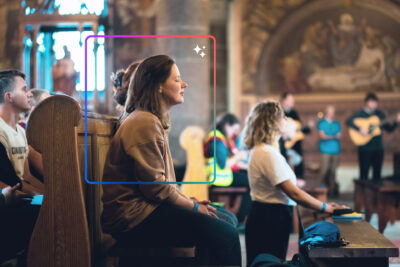
How One Church Uses Technology to Drive Community
Many modern churches are strategically using technology like church apps, event registration, and live streaming to create and strengthen community. Here’s how.
Ministry depends on relationships. In the past, this has made it hard for isolated believers and newly planted churches to stay connected to their Christian community. It also meant that if you missed a weekend service, you might’ve missed your only chance to hear about what was going on in your church.
Thanks to recent advances in technology, ministries like Centrepoint Church in Australia have even more ways to facilitate meaningful connections and increase the impact of their ministry. Many modern churches are strategically using technology like church apps, event registration, and live streaming to create and nurture their community.
Here are three ways they do that.
1. Facilitate meaningful experiences remotely
Some churches see things like live-streaming, online giving, and apps as superfluous accessories or concessions to accommodate a handful of people. But the reality is these technological advances have allowed churches to present their service experience in other locations.
Centrepoint Church, for example, used their church app and other digital tools to expand their church into living rooms around Western Australia. People who otherwise didn’t have access to the quality teaching Centrepoint offered from the pulpit were able to gather together in homes and participate with the congregation.
No longer limited by their physical location, Centrepoint was able to facilitate community remotely via their digital tools, and people even got baptized as a result of these in-home gatherings.
2. Unify your campuses
As churches expand, plant new churches, and launch additional campuses, they can start to feel disconnected, as though your church has splintered rather than grown. For multi-site churches, technology creates opportunities to help multiple campuses feel like one big community.
For Centrepoint, live streaming has played a big role in creating that sense of unity.
“We want to use technology to bring a greater sense of connection,” Executive Pastor Peter Hammer says. “In the last 12 months, we’ve started live streaming our worship services so that, at least once a month, all of our people can hear the same visionary message from our senior pastor. We couldn’t create that kind of connection without technology.”
3. Organize events
Especially in larger churches, it can be hard for people to keep track of everything happening throughout the week. A church app isn’t just intended to be a static hub of information. It should also be the go-to place for people to find out how they can get involved and register for events. It’s a digital jumping-off point for people to connect with your church in person.
Pushpay has a premium event registration platform specially designed for churches. You can create elegant web pages for all your events, accept donations online, track offline registrations, and integrate it with your other tools.
Digital paths to in-person connections
Technology like mobile apps, live-streaming, and digital giving help people connect with their churches when they can’t be there in person. But digital tools like these also create unique opportunities for in-person community as well.
You can make it easier for people to get involved in your events and groups.
You can create opportunities for your ministry to reach beyond the campus, so people can benefit from it together.
And you can ensure that everywhere your church is, your members are sharing the same meaningful experience.
Discover how else your church can cultivate meaningful community through leading engagement strategies. Download the free ebook, The Definitive Guide To Successful Church Engagement today.






